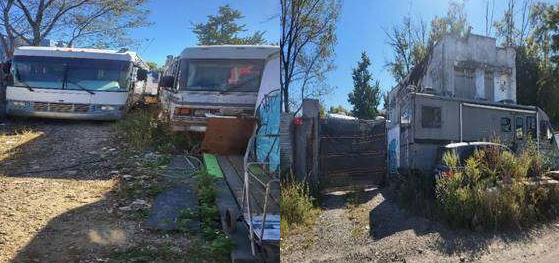By Jessica Mintz
Volume 73, Number 31 | December 3 – 9, 2003
CITY PLANNING
Mini-cafes plan raises big concern
The Department of City Planning is making the rounds of Manhattan community boards with a plan that amends zoning laws to allow some restaurants to set up small sidewalk cafes. Downtown, City Planning deemed spots in Soho, Union Sq. and Chelsea ideal for the tiny outdoor additions. Negative response from outspoken residents from areas covered by Community Board 2 may have altered the department’s initial vision for such cafes on W. Broadway, but other areas still remain on the table.
The plan, which would allow a 4 1/2 ft.-wide area for a single row of tables and chairs, and stipulate leaving at least 8 ft. between the mini-sidewalk café and curb for pedestrians to move around, would “add character to the streetscape and vibrancy to the neighborhoods,” according to wording from the department’s plan.
“It’s different than seeing just a window and then a closed door. It’s livelier, more inviting, and it even adds to safety during hours when businesses have ended but the streetscape is more alive,” said Rachaele Raynoff, spokesperson for City Planning, who also said adding more sidewalk cafe space is part of the department’s vision for lively, vital neighborhoods. “This is a New York idea for New York cafes,” she said.
When representatives from City Planning showed their yet-to-be-certified plans to Community Board 2’s Zoning Committee, presenting Soho streets like W. Broadway and Crosby St. as candidates for the mini-cafes, residents weren’t happy.
“What the board said is that we do not want them on W. Broadway or Crosby,” said David Reck, Board 2’s Zoning Committee chairperson, who said that City Planning had clearly mentioned those streets as being under consideration. However, the board was supportive of the small sidewalk cafe idea along Sixth Ave. and on Centre St., two other streets identified in the plan.
“If you go on a Saturday afternoon and walk [on W. Broadway] from Houston St. south, the place is a madhouse,” said Reck. “Our feeling is that the street is too congested to allow sidewalk cafes there.”
On Crosby St., the sidewalks are too narrow for the requisite pedestrian space, said Reck.
Sean Sweeney, director of the Soho Alliance, also attended the C.B. 2 committee meeting with concerns about the existing congestion in Soho and Little Italy. But another ramification of the plan — the customer base for those mini-cafes — was more on his mind.
“We don’t like the type of clientele that the Soho cafes attract. They’re not serious restaurants,” said Sweeney, who described the main patrons of smaller Soho dining spots as “models and wannabe suitors” who hang around outside, revving their motorcycles to impress the ladies.
As of last week, however, the plan posted on City Planning’s Web site did not include W. Broadway or Crosby. Raynoff could not say at what point those areas had been removed from the list of potential sites, or if, in fact, they were ever included, but Reck confirmed that those two streets had been specifically mentioned during the meeting.
The plan still allows for small sidewalk cafes on 14th St. and around the east, north and west sides of Union Sq., but not on St. Mark’s Pl., as reported two weeks ago in The New York Times.
Gail Fox, co-chairperson of Union Square Community Coalition, said that she hadn’t heard about the small sidewalk cafe proposal, but that the coalition will be looking into the plan at a future board meeting. However, in her experience, Union Sq. area cafes have been more than willing to work out complaints about their outdoor spaces with the community, especially in areas where the passage around the exterior tables were complicated by grates or outdoor benches.
“I would really want it to be done on case-by-case basis,” said Fox, who personally likes the Parisian feeling of the outdoor dining scene around Union Sq.
For Soho restaurant owners like Lauryn Small, whose Latin-Caribbean restaurant Ideya on W. Broadway between Broome and Grand Sts., suffered alongside other Lower Manhattan businesses after 9/11, the idea of being able to legally add a few more tables was very attractive. Hearing that City Planning took W. Broadway out of the plans was a disappointment.
“It would be fantastic,” said Small, who has watched other restaurants on that block, like Diva and Novecento, put illegal tables out on the sidewalk (and get fined for it). “Part of me wanted to join in,” she said, but “part of me wants to, as a restaurant owner, be responsible to the community.”
Outdoor tables might attract “people who might not normally have noticed you,” said Small, who also noted that landmarked buildings on her block of W. Broadway make it a less retail-intensive, and thus less-traveled area than the few blocks to the north.
According to Planning spokesperson Raynoff, the small sidewalk cafes would be subject to the same regulations as the city’s existing legal sidewalk cafes, and the Department of Consumer Affairs would be responsible for enforcing the regulations, as is the case for existing sidewalk cafes.
Also, as for existing outdoor cafes, under the mayor’s anti-smoking law, only 25 percent of outdoor tables at the mini-cafes could be designated smoking tables, said Dina Improta, spokesperson for Consumer Affairs. Consumer Affairs enforces operating hours for sidewalk cafes, and can issue violations when a restaurant has too many tables, or if its tables encroach too far out onto the sidewalk.
This spring, under a modification of regulations governing sidewalk cafes, Consumer Affairs steepened fines for illegal sidewalk cafe operation and was given authority to padlock a restaurant for 30 days if it is found violating the law two times. “Enforcement has been extremely successful,” said Improta, who added that the department has yet to wield a padlock.





































